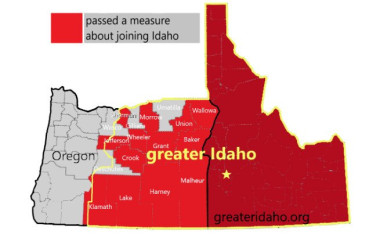Greater Idaho movement: 13 counties in eastern Oregon have voted to secede and join Idaho ( ktvz.com )
On Tuesday, voters in Crook County passed measure 7-86, which asked voters if they support negotiations to move the Oregon/Idaho border to include Crook County in Idaho. The measure is passing with 53% of the vote, and makes Crook County the 13th county in eastern Oregon to pass a Greater Idaho measure.
